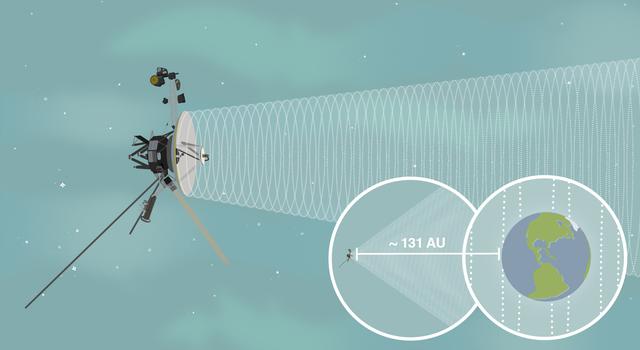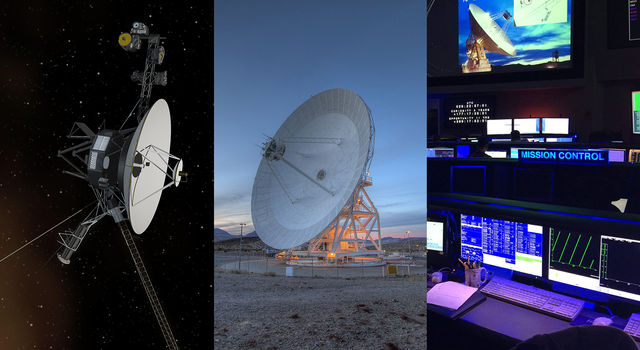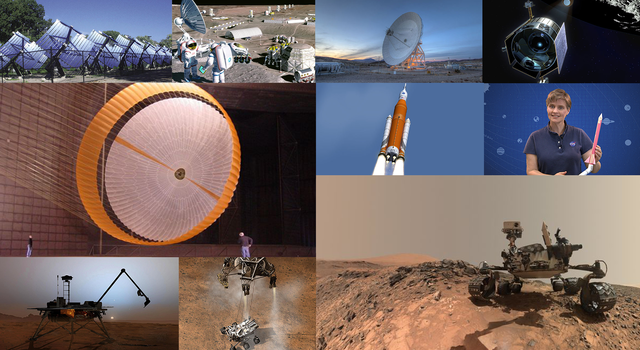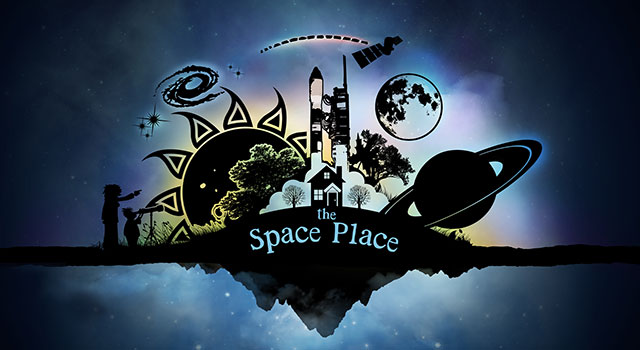|
Thursday, August 31, 2017
JPL News - Day in Review
Wednesday, August 30, 2017
JPL News - Day in Review
|
NASA Jet Propulsion Laboratory
NASA's Jet Propulsion Laboratory
4800 Oak Grove Dr
Pasadena, CA 91109
Posted by
Deep
at
4:36 PM
0
comments
![]()
Share the Wonder of NASA's Voyager Mission (Still Exploring 40 Years Later!) With Students
|
NASA/JPL Edu
NASA's Jet Propulsion Laboratory
4800 Oak Grove Dr
Pasadena, CA 91109
Posted by
Deep
at
1:13 PM
0
comments
![]()
NASA/JPL Educator Workshop – Robotics and Our Solar System
|
NASA/JPL Edu
NASA's Jet Propulsion Laboratory
4800 Oak Grove Dr
Pasadena, CA 91109
Posted by
Deep
at
12:15 PM
0
comments
![]()
Tuesday, August 29, 2017
JPL News - Day in Review
|
NASA Jet Propulsion Laboratory
NASA's Jet Propulsion Laboratory
4800 Oak Grove Dr
Pasadena, CA 91109
Posted by
Deep
at
4:36 PM
0
comments
![]()
Monday, August 28, 2017
JPL News - Day in Review
|
NASA Jet Propulsion Laboratory
NASA's Jet Propulsion Laboratory
4800 Oak Grove Dr
Pasadena, CA 91109
Posted by
Deep
at
4:45 PM
0
comments
![]()
Friday, August 25, 2017
JPL News - Day in Review
|
NASA Jet Propulsion Laboratory
NASA's Jet Propulsion Laboratory
4800 Oak Grove Dr
Pasadena, CA 91109
Posted by
Deep
at
4:50 PM
0
comments
![]()
Cialis works in right place at right time. Buy at our shop!
|
Posted by
Deep
at
1:36 AM
0
comments
![]()
Thursday, August 24, 2017
JPL News - Day in Review
|
NASA Jet Propulsion Laboratory
NASA's Jet Propulsion Laboratory
4800 Oak Grove Dr
Pasadena, CA 91109
Posted by
Deep
at
4:53 PM
0
comments
![]()
JPL News - Day in Review
|
NASA Jet Propulsion Laboratory
NASA's Jet Propulsion Laboratory
4800 Oak Grove Dr
Pasadena, CA 91109
Posted by
Deep
at
4:17 PM
0
comments
![]()
Wednesday, August 23, 2017
Voyager 40th Anniversary: Free online lecture - Thursday, August 24 at 7pm PDT
|
NASA Jet Propulsion Laboratory
NASA's Jet Propulsion Laboratory
4800 Oak Grove Dr
Pasadena, CA 91109
Posted by
Deep
at
4:44 PM
0
comments
![]()
Blog Archive
-
▼
2017
(379)
-
▼
August
(28)
- JPL News - Day in Review
- JPL News - Day in Review
- Share the Wonder of NASA's Voyager Mission (Still ...
- NASA/JPL Educator Workshop – Robotics and Our Sola...
- JPL News - Day in Review
- JPL News - Day in Review
- JPL News - Day in Review
- Cialis works in right place at right time. Buy at ...
- JPL News - Day in Review
- JPL News - Day in Review
- Voyager 40th Anniversary: Free online lecture - Th...
- Trabajo en Casa (USD $ 2,500) Traductor Inglés - E...
- Get Ready for Monday's Total Solar Eclipse! Tips, ...
- JPL News - Day in Review
- Outstanding invoices email 1 of 2
- JPL News - Day in Review
- JPL News - Day in Review
- JPL News - Day in Review
- New Teachable Moment from NASA/JPL Edu – Eclipse 2017
- IMG_7474.PDF
- JPL News - Day in Review
- JPL News - Day in Review
- JPL News - Day in Review
- JPL News - Day in Review
- JPL News - Day in Review
- Работа на дому (2500 долларов США) Требуется перев...
- How are you?
- How are you?
-
▼
August
(28)
About Me
- Deep
- Hey all am sundeep......



















